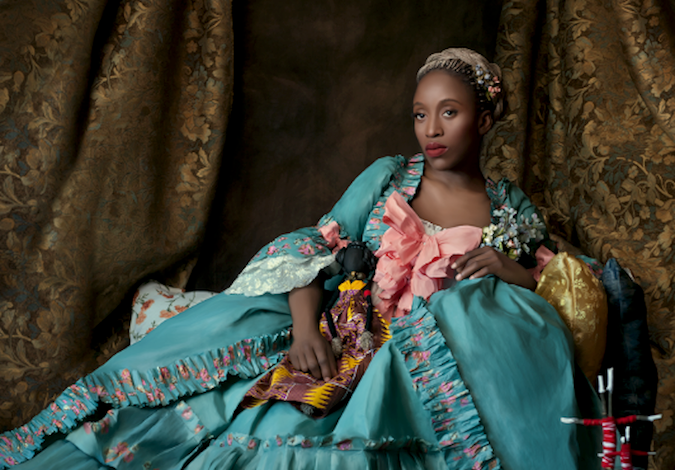
Gallery Visit - Rococo Reality Check at "Re-Writing History"
My Atlanta Time Travelers group attends a variety of events in period clothing and we're always looking for new dress-up opportunities. Group member and good friend Steve recently posted an ad he'd found. It appeared to be a gallery show featuring 18th century fashion.
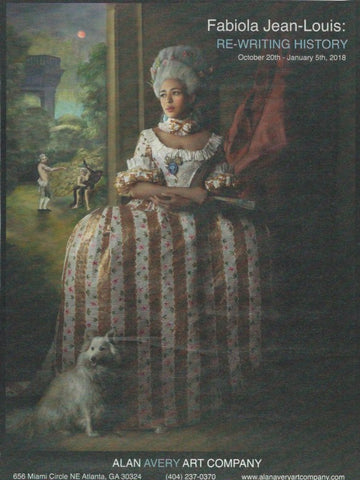 From the October 2017 issue of The Atlantan magazine.
From the October 2017 issue of The Atlantan magazine.
Atlanta offers few occasions to don rococo garb, so our group was excited about paying the Alan Avery Art Company a well-heeled visit. Then I read this informative review of the show.
Brooklyn artist Fabiola Jean-Louis's works juxtapose the brutality of slavery in the 16th-19th centuries with the grand trappings of the era's privileged class. She injects the familiar, gorgeous imagery of Boucher and Fragonard with little jolts of truth -- revealing the painful oppression that was (and to some extent remains) a fact of life for so many. Showing up Caucasian in court dress would be insensitive at best. This was not a dress-up opportunity.
Still, I wanted to see the art. So over the holiday break, my family and I paid a visit.
Re-Writing History showcases several of Jean-Louis' incredible paper creations alongside images that mimic typically lush rococo scenes, but with disturbing, thought-provoking overtones. Look closely at what's going on behind the serenely poised woman in the striped gown.
 The framed print is titled, "They'll Say We Enjoyed It."
The framed print is titled, "They'll Say We Enjoyed It."
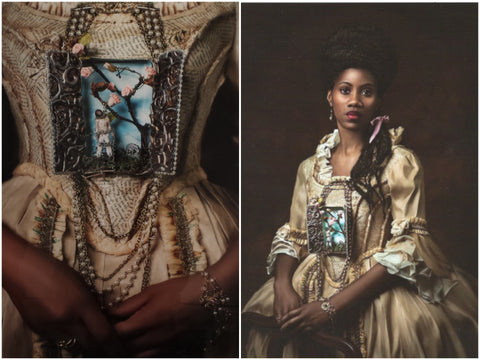 "Rest in Peace" and "Madame Leroy" prints. The paper Robe a l'Anglaise
"Rest in Peace" and "Madame Leroy" prints. The paper Robe a l'Anglaiseshowcases a lynching victim in its ornate, roses-and-pearls-strewn bodice.
The clash between the scrumptious clothing and aristocratic accoutrements of the meticulously crafted prints, and the horrors not-quite-hidden within each composition, had its intended effect -- to create discomfort and make me think. Even if I didn't want to.
I just wanted to swoon over the "clothes." But I couldn't. And I was very glad I wasn't dressed like this:
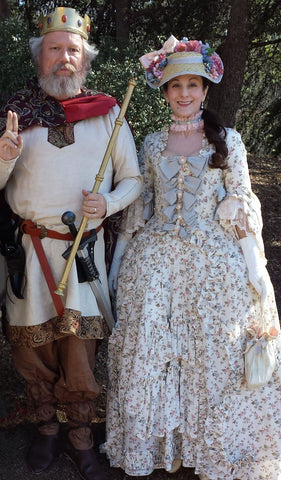 With Steve at AnachroCon 2017: The 60s Through the Ages
With Steve at AnachroCon 2017: The 60s Through the Ages
Re-Writing History reminded me of a recent experience I'd had.
When I demonstrate or teach mid-Victorian dance, I wear period-correct hoop dresses. Lately, these opportunities have been few and far between. Wanting to put my beautiful costumes to consistent use, I volunteered to become a docent at a local plantation-home historic site.
Reviewing the script all tour guides must follow, however, I had misgivings, and brought my concerns to the volunteer coordinator. I wasn't comfortable referring to enslaved people as "servants." She "understood, but that was what they called them." I tried, as politely as I could, which down here is never politely enough, to argue that what was ok then should not be ok now. It's irresponsible, and serves no good purpose.
Knowing I had no chance of changing policy or attitude, or getting the script updated, I withdrew from the program.*
It's one thing to dress in 1860s clothing. It's quite another to perpetuate the glossing over and romanticizing of our most shameful and horrific history, just so no one is made to feel even marginally uncomfortable. A little discomfort might do us all some good.
Just to be clear, my ancestors weren't around for or involved with this idiocy. They were busy fighting their own horrors in the original ghettos of Europe. Still, I wanted no part of this white-washed -- pun intended -- version of history at a "non-profit organization whose purpose is to preserve the past for the future." Whose future would that be, exactly? As a result, they wanted no part of me. So be it.
We are living in interesting times, to say the least. We're experiencing the painful death throes of systematic and systemic bigotry. No, we'll never get rid of racism, sexism, xenophobia, homophobia, or misogyny. That's no more possible than getting rid of stupid.
What we can and must do is untangle, separate, and remove these evils from our institutions and our collective world view. It's already happening, and it's making a lot of people very nervous. Too bad. We have to continue to work to make inequity unacceptable. To push it, and those who cling to it, deep into the closet, sending everyone else out into the light-filled room in the process.

If you'd like to purchase one of Jean-Louis' creations, the dresses run about $24,000, the shoes about $900. The stays shown below, titled "Lady Plum," are $8,250. The prints, which are very limited editions, were labeled as "Price on Request." I'm sure the gallery, or Ms. Jean-Louis, would be happy to provide a quote.
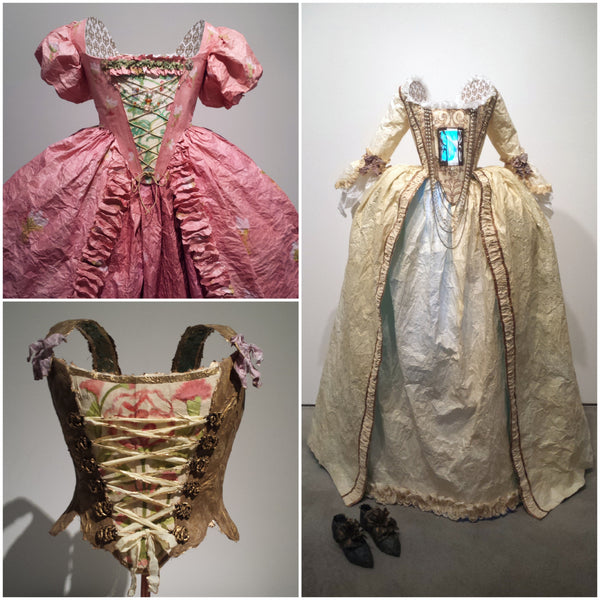

Cover image shows a partial view of Jean-Louis' archival pigment print Marie-Antoinette Is Dead. Compare with Boucher's 1756 work Madame de Pompadour -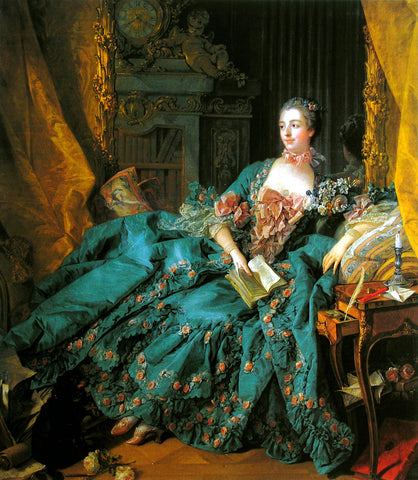

UPDATED Oct. 13, 2019: Have just spoken with that same good friend, now in charge of volunteers at the historic site. He tells me they're in the process of rewriting the script and in the meantime, he just tells it like it was, ignoring the current script in favor of reality. I'm planning to volunteer.
"The arc bends toward justice, but it only bends toward justice because people pull it towards justice. It doesn’t happen on its own.” - Attorney General Eric Holder

commentaires
Great informative post! Looks like a very thought provoking display. Sorry to hear about the situation in which you withdrew. It’s sad they didn’t see your point but I’m glad that you pointed it out to them. Thank you for sharing your review of this exhibit.
The artist created a stingingly painful series of juxtapositions. I wish I could see this in person. The workmanship needed to create those wonderfully metaphoric dresses is astounding.
Thank you, Liza, for taking the stand you did at the Jonesboro estate. Their official position regarding servant/slave is just more whitewashing. I don’t suppose they have people of color working as docents…
I am so glad you made your point and took a stand. I only wish more people would rather than just follow along.
I would have enjoyed viewing this exhibit and experiencing it’s thought provoking message. Thank you for sharing.
D.
Holt Smokes Liza – that’s a LOT to digest. Thanks for your thoughts and position.
